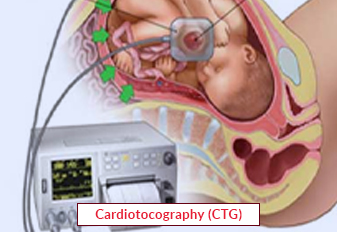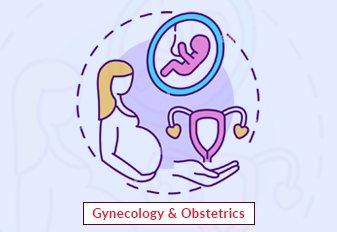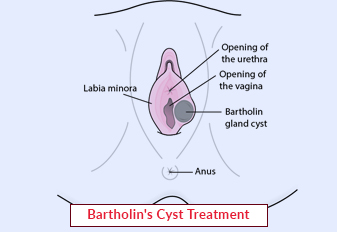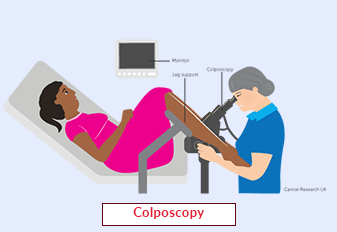Cardiotocography (CTG)

Cardiotocography (CTG) is a technical means of recording the fetal heartbeat and the uterine contractions during pregnancy, typically in the third trimester. The machine used to perform the monitoring is called a cardiotocograph, more commonly known as an electronic fetal monitor. CTG can be used to identify signs of fetal distress.
Fetal well-being is frequently evaluated by CTG monitoring, which detects infants who may be hypoxic (low on oxygen). The main application of CTG is in labor. A review concluded that, although the research on this topic is outdated and should be viewed cautiously, there is no evidence to support the idea that monitoring high-risk pregnant women throughout the prenatal period (before labor) is beneficial to either the mother or the unborn child.
Book an Appointment
About Cardiotocography (CTG)
The visual representation of uterine contractions and FHR is called cardiotocography. Cardiotocographic monitoring is thought to be crucial, yet there is a lot of difference in practice and the suggested amount of time for monitoring. It may be impossible to diagnose premature labor and placental abruption without continuing continuous monitoring for a minimum of six hours, and maybe up to twenty-four hours, as needed. Cardiotocography (CTG) is a commonly utilized modality in labor and delivery for the detection of fetal hypoxia. It is possible to visually assess the fetal heart rate (FHR) pattern by characterizing its baseline, variability, and cyclical variations. Fetal heart rate rises when there is a decrease in baseline variation in fetal hypoxia.
Procedure of Cardiotocography (CTG)
CTG monitoring is widely used to assess fetal well-being by identifying babies at risk of hypoxia (lack of oxygen).
-
Preparation: The healthcare provider explains the procedure to the expectant mother and ensures her comfort during the test. The woman is positioned comfortably on her back or side, depending on gestational age and individual comfort.
-
Application of Transducers: Two transducers are placed on the woman's abdomen. The first transducer, the ultrasound transducer, is positioned over the area where the fetal heart rate is best heard. The second transducer, the toco transducer, is placed over the fundus of the uterus to measure uterine contractions.
-
Monitoring: The CTG machine records the fetal heart rate and uterine contractions continuously for a specific duration, usually 20-30 minutes. The machine produces a graph (trace) that shows the changes in fetal heart rate and uterine contractions over time.
-
Interpretation: The CTG trace is analyzed by the healthcare provider to assess fetal well-being. They examine various parameters, including baseline fetal heart rate, variability, accelerations, decelerations, and the relationship between fetal heart rate and contractions.
-
Assessment of Variability and Patterns: Variability refers to the normal fluctuations in the fetal heart rate, which indicates a healthy nervous system. Patterns, such as accelerations (temporary increases in heart rate) and decelerations (temporary decreases in heart rate), are also evaluated for normalcy.
-
Non-Reactive Traces: If the CTG trace shows no significant variability or abnormal patterns, it is considered non-reactive. Further assessment or additional tests may be necessary to evaluate fetal well-being more closely.
-
Documentation and Communication: The findings of the CTG monitoring are documented in the woman's medical records, and the results are communicated to the woman and her healthcare team. Further actions, such as additional testing, changes in management, or further monitoring, may be recommended based on the CTG findings.
Require Assistance?
Get A Quick Callback From Our Healthcare Experts






